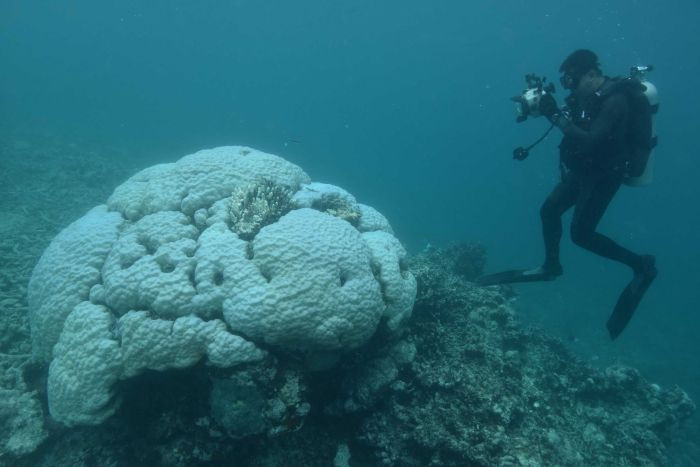Misrepresentations on the coral bleaching in the Great Barrier Reef

Widespread misinterpretations pertaining to mass coral bleaching in the Great Barrier Reef (GBR) transpired across various news sources in Australia. According to The Australian , Russell Reichelt, chairman of the Great Barrier Reef Marine Park Authority, initially blamed activist scientists and lobby groups on misleading maps, surveys and data regarding the extent and impact of coral bleaching on the Great Barrier Reef.
There were headlines that stated about 93 percent of the reef is practically dead. Other news headlines indicated about 35 percent or 50 percent practically has been affected by mass coral bleaching.
“However, based on our combined results so far, the overall mortality rate is 22 percent — and about 85 percent of that die-off has occurred in the far north between the tip of Cape York and just north of Lizard Island, 250 km north of Cairns,” said Reichelt.
Reichelt also added that in a few months’ time, about 75 percent of the reef will recover and the part mostly affected by coral bleaching was only confined to the northern section of Cape York.
“I don’t know whether it was a deliberate sleight of hand or lack of geographic knowledge but it certainly suits the purpose of the people who sent it out,” Reichelt told The Australian.
However, Reichelt was quick to retract his statement to The Australian when he told The Guardian that he did not mean to imply that the activist scientist and lobby groups were the ones misleading the reports, rather it was the media.
Reichelt called on people concerned, groups and government organisations to make things right. Instead of wrongfully sending out reports, it is time that they all work together to save the World Heritage Site.
AIMS on the GBR
For more than 20 years now, the Australian Institute of Marine Science (AIMS) has been monitoring the overall health of the GBR region. The monitoring program plays a crucial role in the sustainable use and development of the tropical marine environment through setting baselines and alerting those concerned about any change in the environment.
The agency has the longest monitoring, comprehensive dataset covering the health of the GBR. There has been continuing research and support for the long-term data collection where AIMS managed to develop remote-sensing technologies and ocean observing technologies support observations collected where there is a lesser need for on-site monitoring.
A paper published in the Academia titled, “Modeling spectral discrimination of Great Barrier Reef benthic communities by remote sensing instruments,” made use of remote sensing technologies to monitor the coral reef health. The instrument was able to penetrate the ocean environment with lesser noise and better at capturing needed data.
Reef Grid , another communication device that aims to protect the GBR for enhanced monitoring of key environmental parameters and human activity uses high-speed radio communication backbone to establish communication between reef systems and mainland Australia. Radio technologies enhancing the monitoring programme of AIMS for GBR are also getting developments. This is thanks to the advanced and patented radio frequency based technology used in the network extender which is used to strengthen weak cellular signals. The technology is developed by 5BARz International ( OTCQB: BARZ ).
“This is truly a revolutionary device. The radiation pattern of the antennae is like the Ellipsoid, which will try to hug the environment that they are in. So that is how you get very good performance no matter where you are,” 5BARz CTO Naresh Soni explained.
Remote sensing technologies and radio frequency instruments that track the reef’s behavior are just tools for people to use in order to immediately act on saving the environment. Australia’s long battle in preserving a World Heritage Site does not just stop on research and data collection. Rather than leaking misconstrued reports, Australians should be better at calling each and every one to support and help save the Great Barrier Reef for future generations.





















